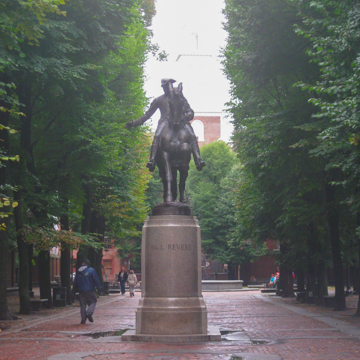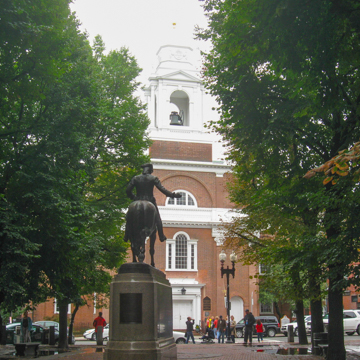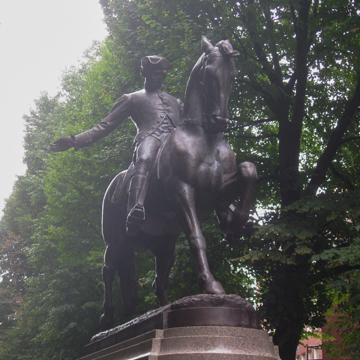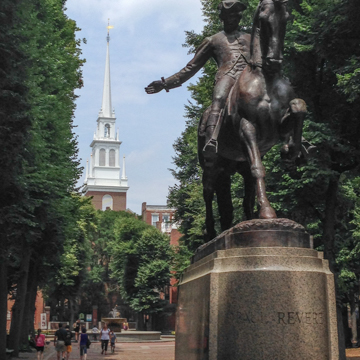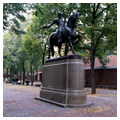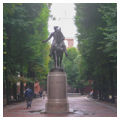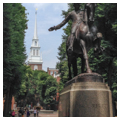You are here
Paul Revere Mall (Boston Prado)
A fine pedestrian passage, this longitudinal public space links two Boston landmarks, St. Stephen's Church (NE9) on Hanover Street and Old North (or Christ) Church (NE12) on Salem Street. Rows of European linden trees soften the brick surfaces of the surrounding apartment buildings, whereas bronze plaques affixed to the nine-foot-tall brick walls provide a historical context. Spatial sequences are designed to provide appropriate focal points, notably the equestrian Paul Revere designed by Cyrus Dallin in 1885, but only cast in 1940, and to capitalize on views and approaches to enclosing monuments, the Ebenezer Clough
Writing Credits
If SAH Archipedia has been useful to you, please consider supporting it.
SAH Archipedia tells the story of the United States through its buildings, landscapes, and cities. This freely available resource empowers the public with authoritative knowledge that deepens their understanding and appreciation of the built environment. But the Society of Architectural Historians, which created SAH Archipedia with University of Virginia Press, needs your support to maintain the high-caliber research, writing, photography, cartography, editing, design, and programming that make SAH Archipedia a trusted online resource available to all who value the history of place, heritage tourism, and learning.



